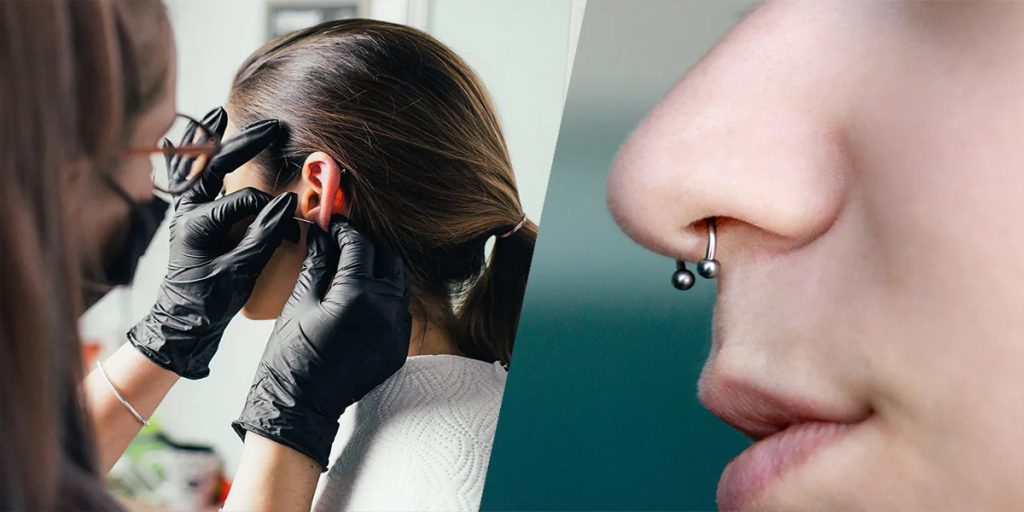
Ear and nose piercing
Ear and nose piercing have been a cultural tradition for centuries. From ancient Egyptian and Indian civilizations to modern-day fashion, ear and nose piercing have been a way of expressing one’s style and individuality. However, piercing is not just about fashion; it is a medical procedure that requires careful consideration and attention to safety.
As a practicing dermatologist, I often see patients with complications from ear and nose piercings. In this blog, I will discuss the risks associated with piercing and how to ensure a safe and successful piercing experience.
Ear Piercing
Ear piercing is the most common form of body piercing. In most cases, it is considered safe and can be done at home or in a professional setting. However, it is essential to take certain precautions to prevent infections and other complications.
Firstly, it is important to choose a reputable piercer or a licensed healthcare professional. They should use sterile needles and equipment, wear gloves, and ensure that the piercing area is properly cleaned and disinfected. They should also provide aftercare instructions to prevent infections and promote healing.
Secondly, it is essential to choose the right location for the piercing. The ear has several areas that can be pierced, including the earlobe, cartilage, and tragus. The earlobe is the most popular location for piercing, while cartilage and tragus piercings are more complex and require a skilled piercer.
Thirdly, it is important to choose the right earring. The earring should be made of a hypoallergenic material, such as surgical stainless steel, titanium, or 14K gold. Avoid earrings made of nickel or other cheap metals that can cause allergic reactions.
Nose Piercing
Nose piercing is another popular form of body piercing. It is often done on the nostril, septum, or bridge of the nose. Like ear piercing, nose piercing requires careful consideration and attention to safety.
Firstly, it is important to choose a reputable piercer or a licensed healthcare professional. They should use sterile needles and equipment, wear gloves, and ensure that the piercing area is properly cleaned and disinfected. They should also provide aftercare instructions to prevent infections and promote healing.
Secondly, it is essential to choose the right location for the piercing. The nostril is the most popular location for piercing, while septum and bridge piercings are more complex and require a skilled piercer.
Thirdly, it is important to choose the right jewelry. The jewelry should be made of a hypoallergenic material, such as surgical stainless steel, titanium, or 14K gold. Avoid jewelry made of nickel or other cheap metals that can cause allergic reactions.
Complications of Piercing
Despite the precautions, there are risks associated with ear and nose piercing. Some of the common complications include:
Infection: Piercing can introduce bacteria into the body, causing infection. Symptoms of infection include redness, swelling, pain, and discharge. In some cases, infection can lead to abscess formation and require medical attention.
Allergic reactions: Some people are allergic to the metals used in earrings and nose rings. Allergic reactions can cause itching, redness, and swelling.
Keloid formation: Keloids are raised, thickened scars that can form around the piercing site. Keloids are more common in people with dark skin and can be difficult to treat.
Migration and rejection: The body may reject the jewelry, causing it to move or fall out. In some cases, the body may form a scar tissue around the jewelry, causing it to migrate or become embedded.
Nerve damage: Piercing can damage nerves in the ear or nose, causing numbness or loss of sensation.
Prevention and Treatment
To prevent complications, it is essential to follow aftercare instructions provided by the piercer
Get In Touch



